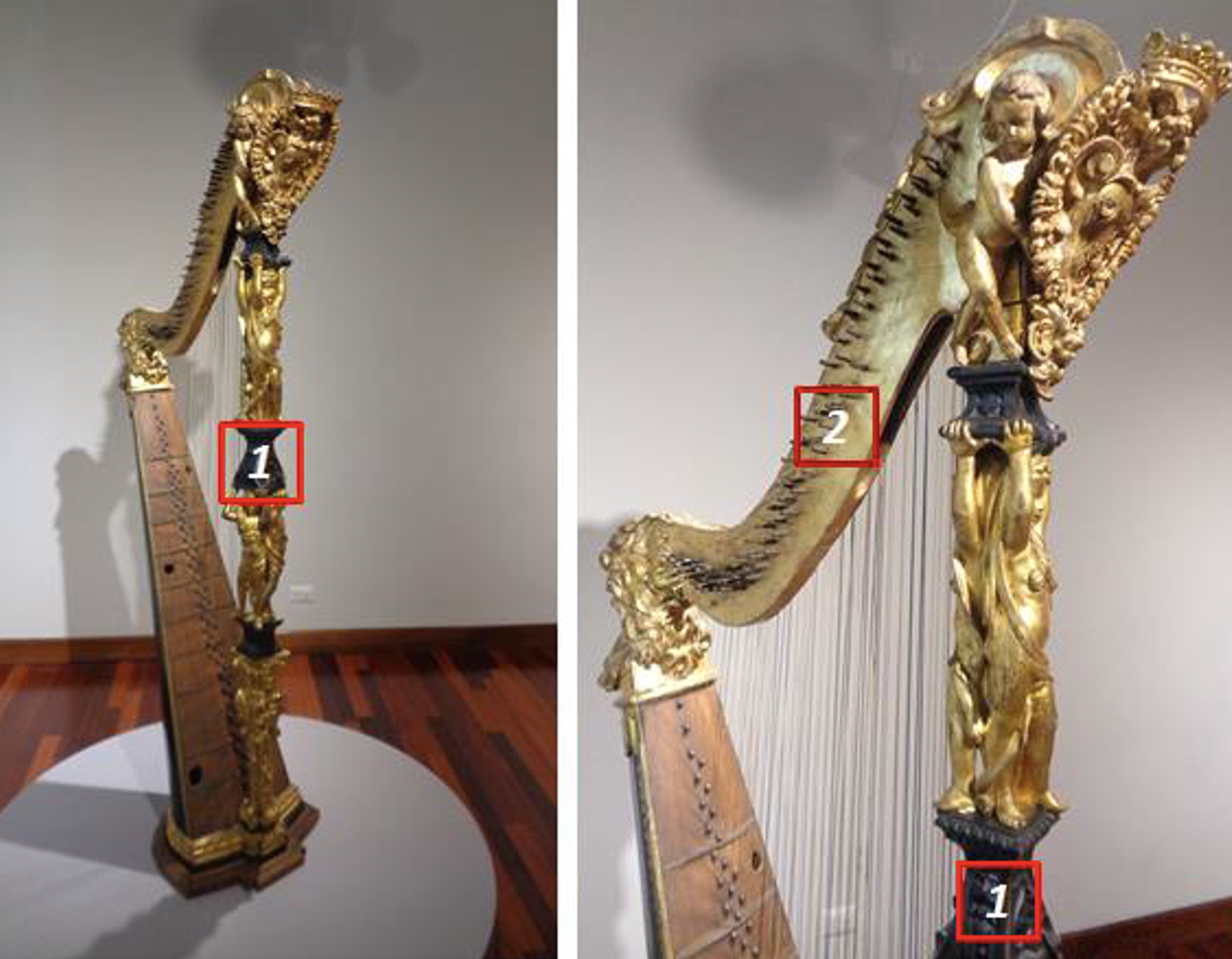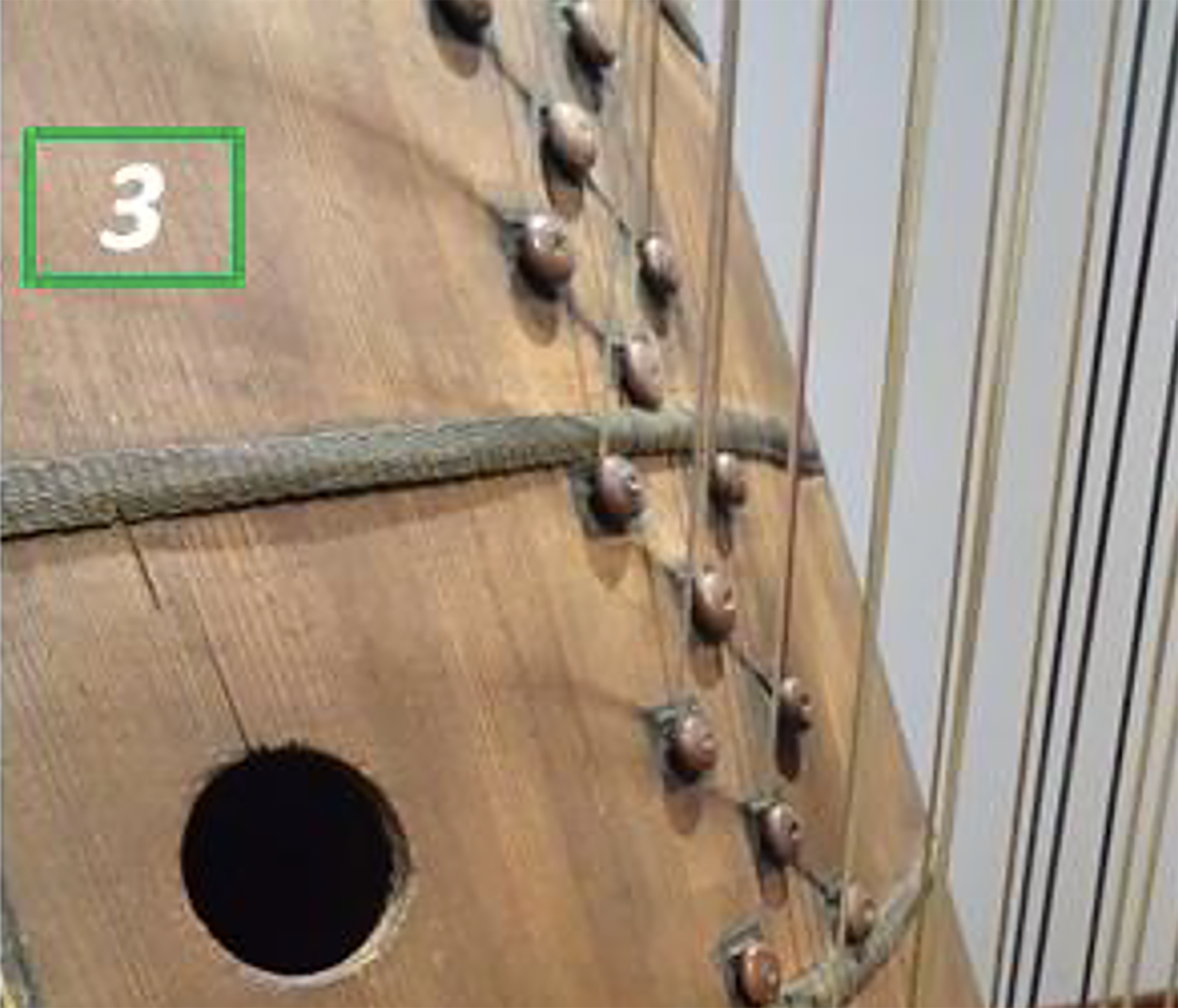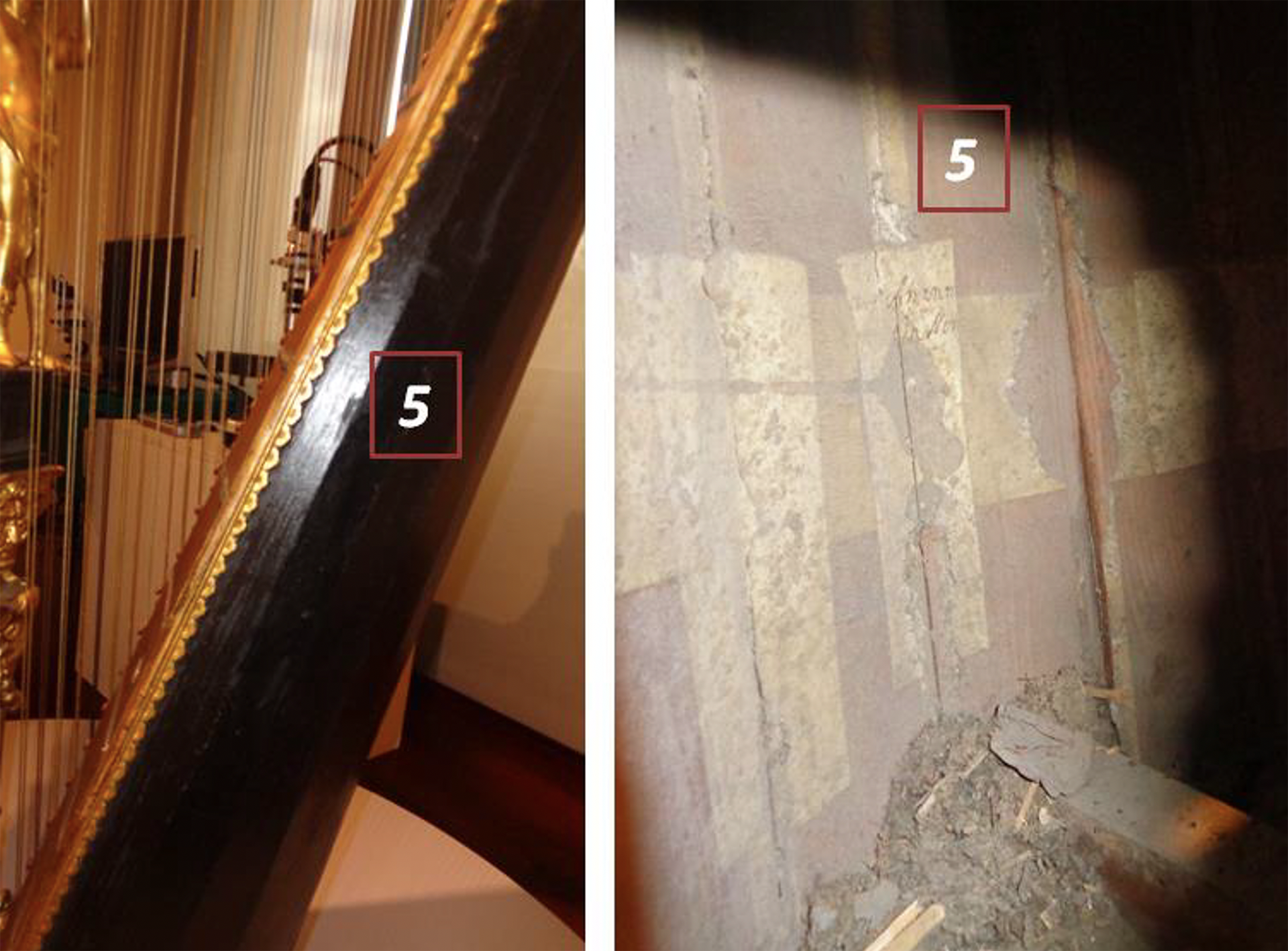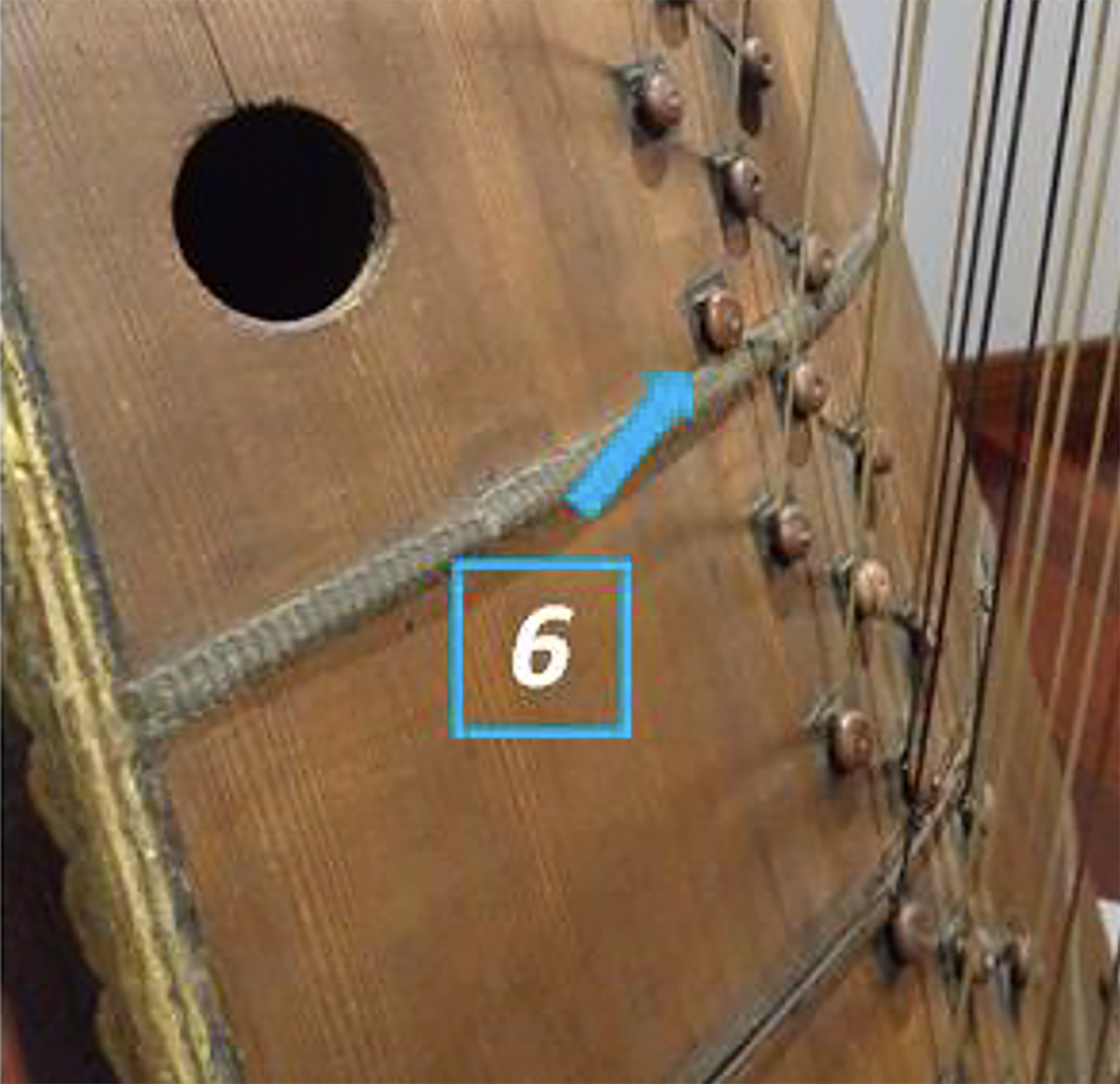DOI: 10.5281/zenodo.7762787
Reference: KO/1355/18 Date: 18/02/2019
Determination of Wood Species
As part of an exploratory trip, we were in the Museo Nazionale degli Strumenti Musicali in Roma from December 16 to 18, 2018, and have a wood species determination of the individual components of the
Barberini Harp (Roma 1633, Geronimo Acciari).
In addition, we have other wood samples (fragments) from an institute in Bologna (preliminary investigation 2017 / X-ray technology and SEM), which we were able examine at the Thünen-Institut for the purpose of microscopic determination. The results of our investigation are not entirely in agreement with the results of the Bologna team investigation.
Investigation Report
The anatomical determination of the structural features for wood species identification was carried out in a completely non-destructive way (with a few exceptions, in consultation with the museum management), with the help of a high-resolution 3D-reflected light microscope (Keyence: VHX-S550). This special microscope has an integrated image analysis software that enables the production of flat observation surfaces so as to enable identification of structural features. The detected structural features of the examined areas of the harp were prepared for comparison with the scientific wood collection at the Thünen Institute für Holzforschung, as well as with the databases macroHOLZdata and microHOLZdata (the two databases were developed at the Thünen-Institut, Institut für Holzforschung [Institute for Wood Research]).

The column of the harp (1), and the neck (2) (Fig. 1 ).
The column and the neck (1 and 2) correspond fully, in terms of macroscopic and microscopic structural features, to the wood of the botanical genus
Juglans spp. = Walnut, walnut; from the JUGLANDACEAE family.

The soundboard, detail (Fig. 2 ).
The soundboard (3) corresponds fully, in terms of macroscopic and microscopic structural features, to the wood of the botanical genus
Abies spp. = Fir, fir; from the family of PINACEAE.
The inner construction timbers (4) could be examined in the area connecting to the soundboard (which cannot be seen in the image) and also show full correspondence with the wood of the botanical genus
Abies spp. = Fir, fir; from the family of PINACEAE.

The body of the harp, left, and the interior, right (Fig. 3 ).
The body (5) of the Barberini Harp is also made of softwood—further examination was not possible at this point, as damage to the paintwork has over the centuries been thickly brushed over or retouched several times. An examination inside the instrument was not possible either.

The blue arrow points to buttons (Fig. 4 ).
The examined buttons (6) show full correspondence with the wood of the botanical genus
Buxus spp. = Boxwood, box; from the family of BUXACEAE.
As previously mentioned, we are planning to publish the results in a scientific article: probably in a well-known “specialist," German-language journal and in an international scientific publication. However, this will be delayed a little, as other scientific articles (publications) must first be completed.
Cite:&&Volker Haag, “Thünen-Institut Wood Species Identification Report," Harfenlabor.com, May 11, 2022, https://www.harfenlabor.com/research/thunen-wood-species-identification-report/.
